While I am off at the Weston A Price Conference for the second half of this week, I enlisted one of my favorite bloggers to help me out with a guest post. Tamara of Oh Lardy is stopping by today to share a fermented apple juice recipe. I met Tamara a year ago and I am so excited to have her share this recipe with you all today. She is the master at making fermented fruit cultures! I hope you will try this healthier alternative to store bought apple juice!
We love fermented foods over here at Oh Lardy. We will ferment just about anything…kraut, carrots, berries, kohlrabi, cranberry sauce, kumquats…you name it, we will ferment it!
Fermented foods are full of probiotics, enzymes, vitamins and are easier to digest than non-fermented foods. They are a key part of a healthy, traditional foods diet. There are many benefits to eating fermented foods daily, which is why I am very intent on eating them with every meal.
It is so easy to make fermented foods at home. I love experimenting with new combos and new recipes!
I have been trying to add more probiotic beverages to our rotation at home. I tend to always make the same 3 things, though: Fermented orange juice, lemonade and kombucha tea. We love those drinks but I was ready to add a new one to the arsenal!
I was flipping through Nourishing Traditions and noticed a recipe for apple juice. Yum! Fermented apple juice sounds perfect, especially for this time of year!
I thought I would modify the juice a bit as I think many of the fermented recipes in NT use too much salt for my taste!
I gathered my apples, organic of course, and washed them well for juicing.
I juiced about 9 apples, enough to make a quart of juice. There is a lot of foam produced when juicing apples!
I skimmed off as much foam as I could. Then I added a teaspoon of powdered culture starter and a pinch of salt. You could easily sub liquid whey for culture starter but I prefer to use culture starter for my ferments.
I poured it all into a quart size mason jar and covered tightly with a lid and let sit at room temperature for 3 days. (please ignore that the lid says ‘salsa’! I reuse my mason jar lids often! 
At the 3 day mark, I noticed bubbling, fizzing and pressure on my mason jar lid, which is a good sign that this ferment was a success. There was still a little foam at the top (no big deal) and the sediment from the apples had settled to the bottom. If you have a lot of sediment, you may want to strain the juice as you pour into a glass.
It was DELICIOUS! It tasted creamy, almost like liquid butterscotch.
I put it in the refrigerator and we enjoyed it over the next few days. I found I liked mixing mine with a bit of naturally sparkling water while my daughter enjoyed it by itself over a few cubes of ice. You could even add some fall spices like cinnamon or clove if you would like.
Fermented Apple Juice
Makes 1 quart
Ingredients
- about 9 organic apples, enough for one quart of juice
- 1 tsp powdered culture starter or 2 Tbsp whey
- pinch of good sea salt
Directions
- Juice the apples, skimming off as much foam as possible.
- Add culture starter or whey and salt to the fresh apple juice.
- Pour the mixture into quart size mason jar.
- Put lid on jar and tighten.
- Leave at room temperature for 3 days.
- Transfer to the refrigerator and enjoy!
- Should last about a month in the fridge, but you will drink it faster than that!
Don’t have a juicer? Don’t worry! You can still make the juice!
While fresh juiced, organic apples are always the best way to go for making this juice, I decided to try to ferment store bought pasteurized juice. And, guess what!? It worked!
I purchased 3 types of apple juice and cider. I tried to find ones that did not have preservatives (except ascorbic acid). One was a regular unfiltered apple juice. One was an organic apple cider. The other was an apple cider with spices added already.
I followed the same routine…poured into a quart size jar, added pinch of salt, culture starter and tightened lid. I let sit at room temperature for 3 days and they each became a successful ferment.
They tasted very similar to the fresh juiced apple juice, but less ‘apple-y’. So, if you don’t have a juicer, you could try this route and see if it works for you!
What are your favorite fermented juices?
Meet Tamara of Oh Lardy
 Tamara is a wife, a mother, a Certified Healing Foods Specialist, a blogger, Holistic Health Coach and real food advocate/educator. She lives outside Chicago and is passionate about real food, exercise and general health and wellness. She blogs over at Oh Lardy about a variety of real food topics.
Tamara is a wife, a mother, a Certified Healing Foods Specialist, a blogger, Holistic Health Coach and real food advocate/educator. She lives outside Chicago and is passionate about real food, exercise and general health and wellness. She blogs over at Oh Lardy about a variety of real food topics.

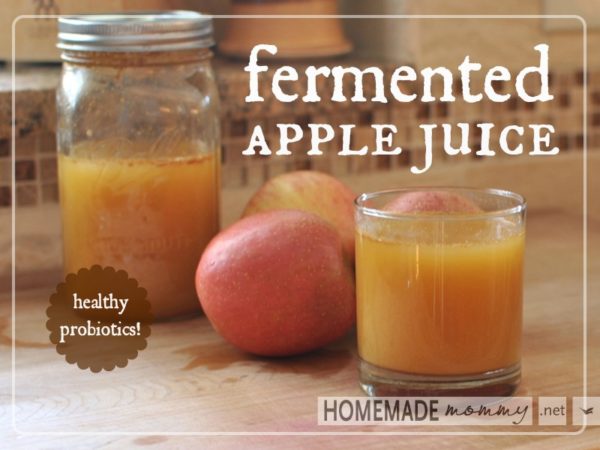
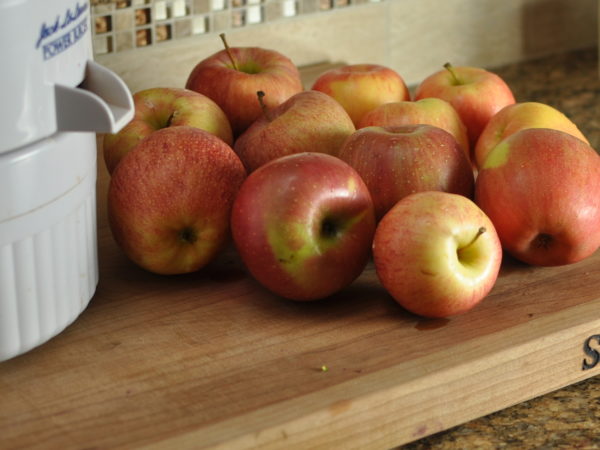

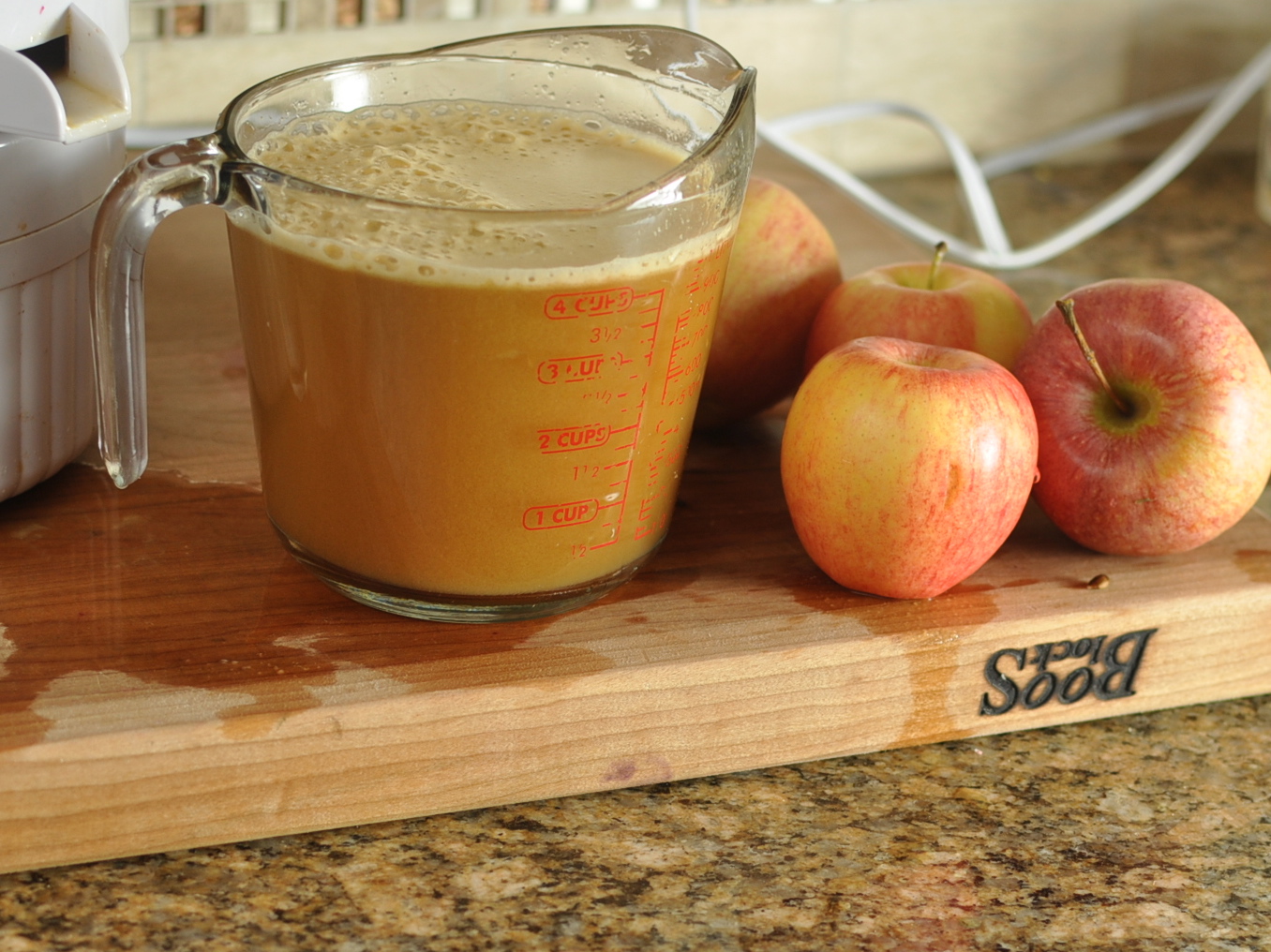
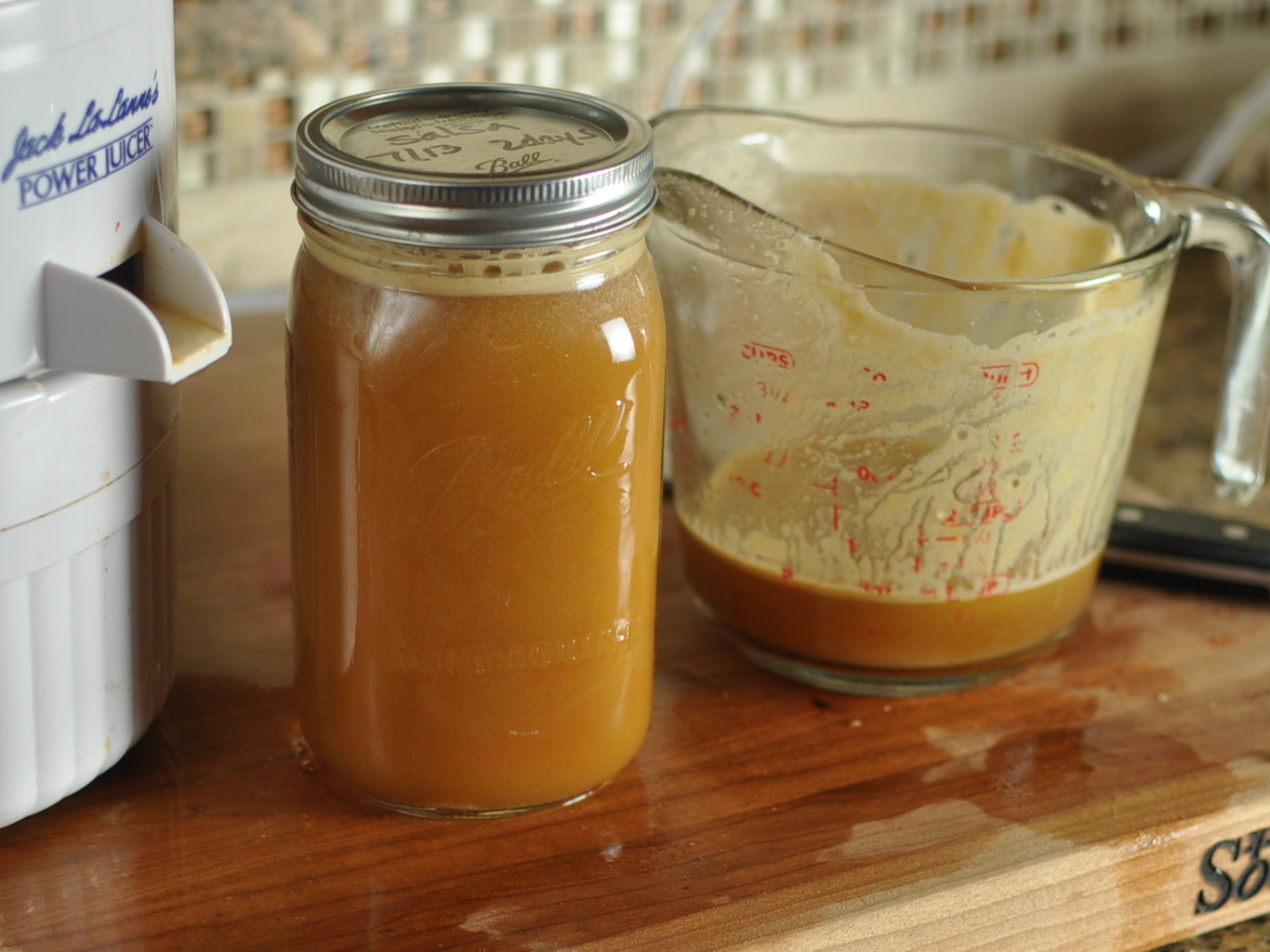
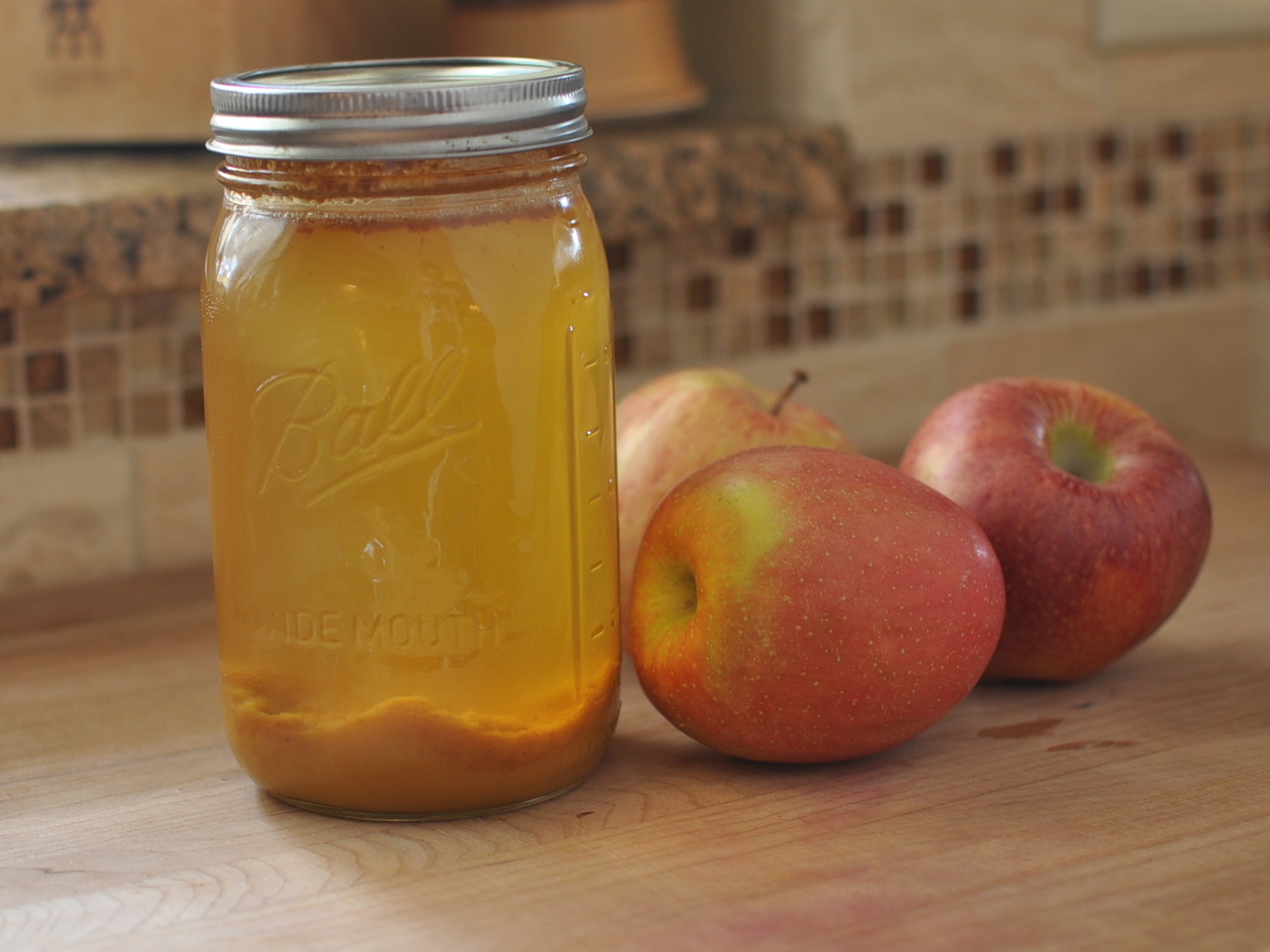
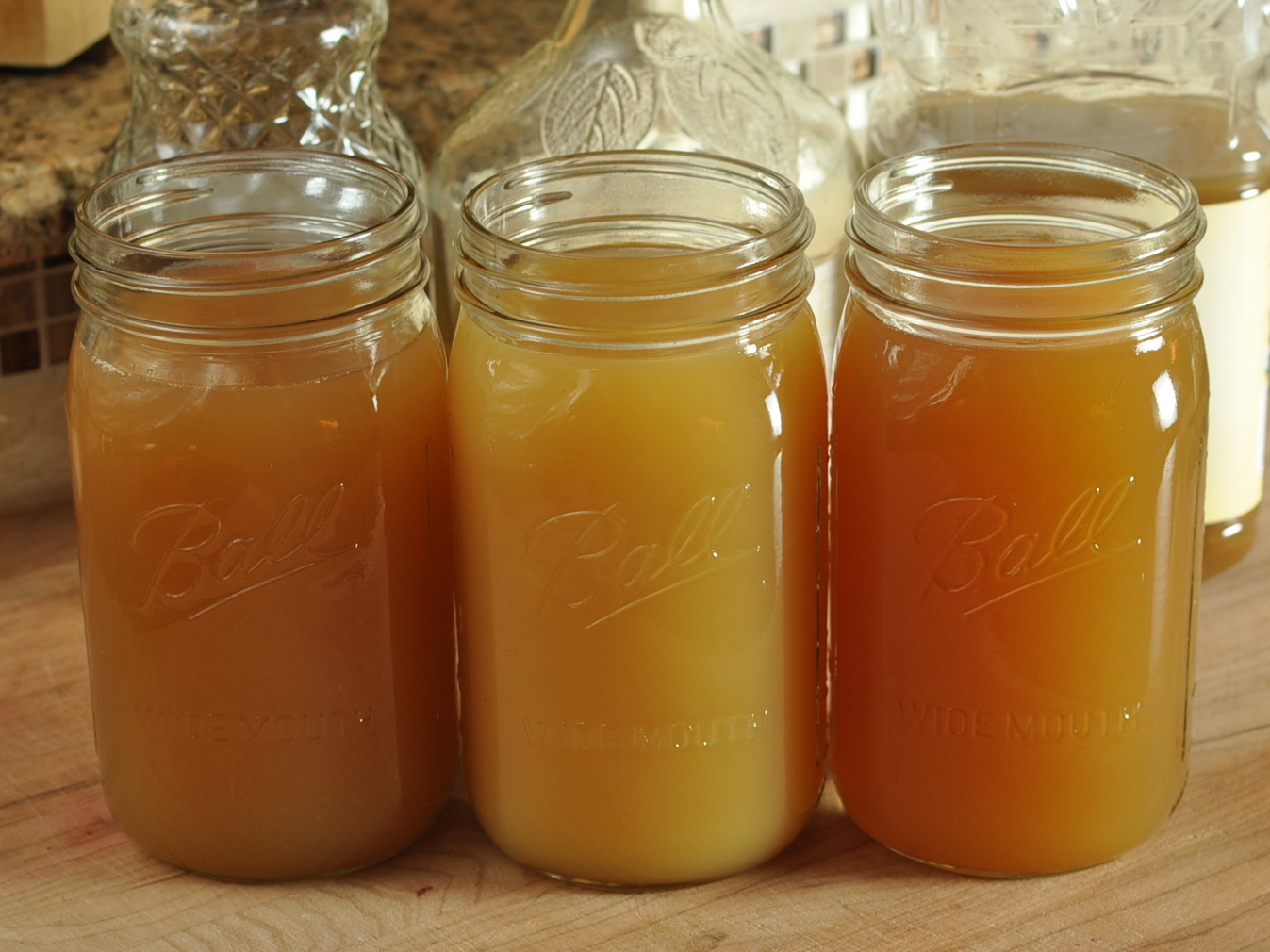
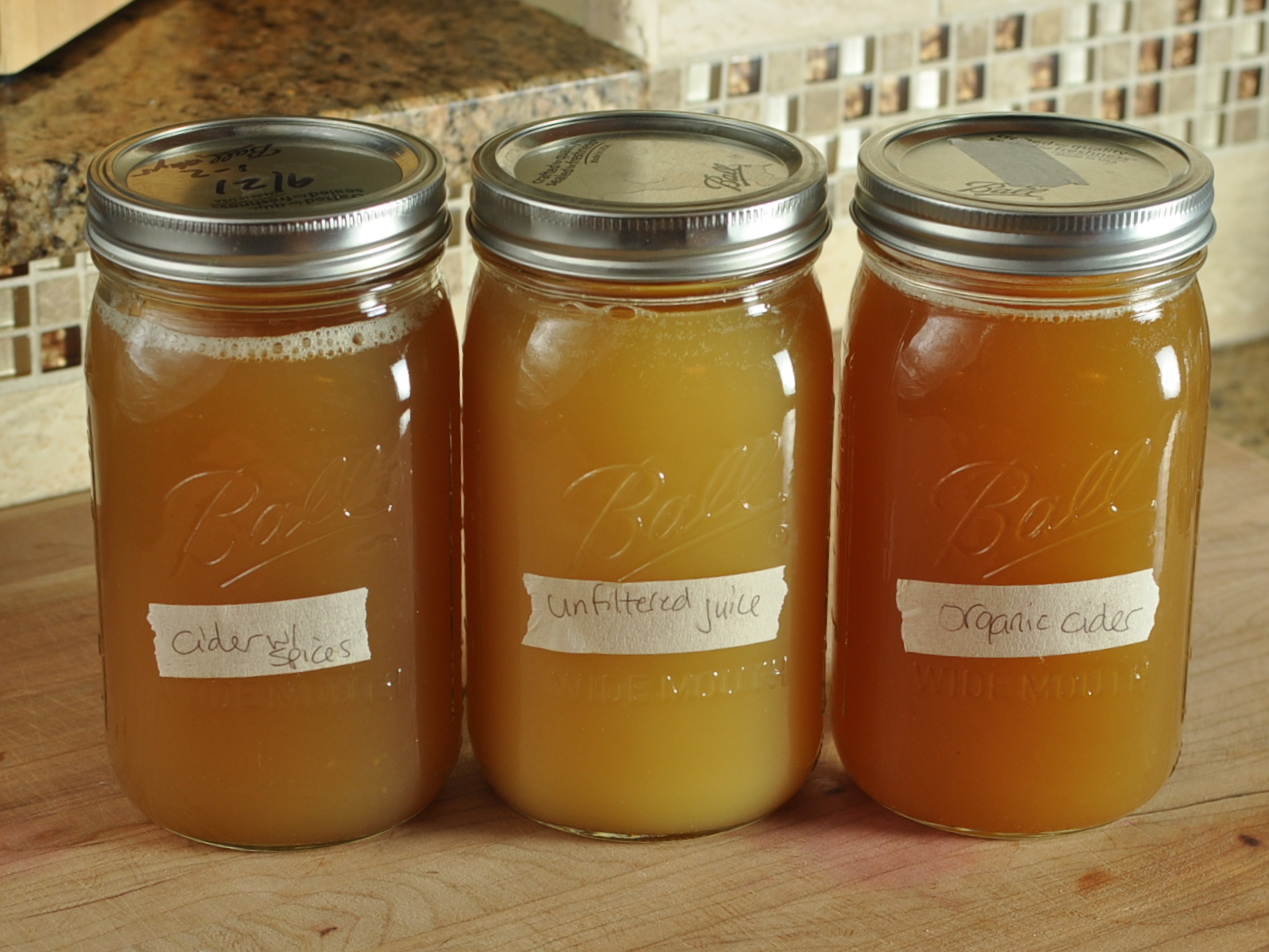


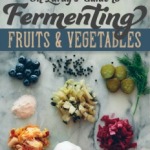











I’ve never heard of fermented juice, but it looks delicious!
This looks so good and seems pretty simple, but I’m new to fermenting (really new- like tried sour kraut once and it molded and got all nasty) and I have what may be a dumb question. Does this produce any alcohol content in the finished product? I wouldn’t want to accidentally get my three year old tipsy (or myself, for that matter)!
I wouldn’t worry about it but you can try it first to make sure!
Do you peel the apples before you juice them?
No you do not need to peel or seed or core the apples before juicing! Just cut to fit into the opening of your juicer! Easy Peasy!
So for a culture starter, can I use a little kombucha tea? Or is it a different type? (sorry, a total beginer here ) thanks
The recipes uses a powdered starter culture – see link above – or you can use whey.
I use the contents of a good lively multi-strain (the more the merrier!) probiotic capsule for the culture starter. I like Megaflora by Mega Foods, but I should think any good refrigerated brand would work. (It’s a great way to test if a probiotic capsule you’re using or thinking about using is alive, too!) I haven’t done apple juice yet – picked up fresh cider today – but I’ve done a few other juices and they’ve all come out super fizzy! I’ve been using 2 capsules to replace 1/4C whey or 1 tsp powdered veggie starter.
Maybe a silly question – but is this a similar chemical reaction to what happens when I forget about a jug of apple cider in the fridge and it starts to build pressure? Or is that different?
Likely the same thing!
The links do not connect to they whey or the culture starter.
The link to the starter culture is to the VGN marketplace. You simply need to click on the Cultures for Health link and navigate to the Body Ecology culture!
The link for whey is a tutorial on how to get whey from straining yogurt.
I clicked the link above and was looking around the Cultures for Health site and cannot figure out which powdered starter culture to order. Please advise.
I use the Body Ecology Culture Starter for vegetables.
I can’t wait to make the Wassail using YL’s essential oils with this!!
I’m also looking for a little clarification on what starter to use. I’ve got a box of body ecology kefir starter (that expired a few months back). Will that work? Or does it need to be a different kind of starter? Thanks! Can’t wait to make this!
The body ecology starter would be fine (but not expired!).
I have never tried it with kefir starter, only vegetable starter. Not sure of the difference. But, it should definitely NOT be expired as the good bacteria will possible be dead and you need those for the ferment. You could also use liquid whey or empty some probiotic capsules into the juice. Good luck!
This post is perfectly timed! My husband has been begging for apple cider and I’ve wanted to make a fermented version. Your pics and explanation are super helpful! Thanks! I can’t wait to make this!
Enjoy!
IS the result different from making hard cider (YUM!)? Does this have any alcohol content as a result of the culture consuming the fructose? If I were to leave it a longer, would I get homemade apple cider vinegar? I’m super excited about making my own traditionally fermented foods at home!
This should not contain significant alcohol content. A slight alcohol content is a risk with ANY ferment but due to the short ferment this is not hard cider. To make hard cider, you usually need to add a yeast AND let it ferment longer. It is the yeast that makes alcohol as it eats the sugar. Of course, there are natural yeasts in the air but they shouldn’t be enough to make alcohol!
I am not sure about the apple cider vinegar. I would think so….I know when my kombucha overferments it turns to vinegar! Give it a shot!! and good luck!
Fun idea. I ferment a ton of stuff but never would have thought of just fermenting the juice without intentionally trying for alcohol if it wasn’t for it happening accidentally here a few weeks ago. We had bought some apple cider to make hard cider out of. You have to pour off a quart of cider from the gallon to make room for the fermentation process. We had one quart of juice left in the fridge that was forgotten for 3+ weeks. When I took it out to toss it I found that it was yummy and effervescent but still sweet. I guess I have enough good ‘bugs’ flying around in here that stuff just goes on it’s own. Thanks for giving us a specific process to (hopefully) reproduce what happened here by accident.
How long do you suppose the fermented cider would “keep?”
I like to keep fermented juices for no more than 3-4 weeks, although we always drink them faster than that. Also, fermented juices make wonderful popsicles!!!
Soooo, I’ve been fermenting my Kirkland organic a.j. for the past month. Today I chugged down a pint and was noticeably tipsy…..mine is not creamy or butterscotch-y but tastes like a dry hard appled cider. Have I done something wrong and stumbled on something totally awesome?
SO i have done this with homemade apple juice, now do you think i can try it with homemade cranberry juice??
I would think so although I have not tried it.
I’m making this now, and I just wanted to say I just juiced apples in my food processor with great success! So no juicer? Juice on!
Can you tell us how? I don’t have a juicer and would LOVE to make this!
Do you think I could use my water kefir grains to ferment the juice?
Instead of the starter ( because I need a dairy free option) what else do you think I could use? Thanks!
Use a dairy free vegetable starter.
I don’t know what happened buy it’s day 2 for mine I think I have a white mold floating on top. I used whey and not the starter. Could my whey be bad?
Can you do this with a coffee filter over the top instead of a lid? That’s how I make my kefir. I tried this with a lid and it didn’t work. I hope my culture isn’t dead! I used the body ecology starter powder. Thanks!
Hello
Can you explain the difference between fermented apple juice and hard apple cider? Hard apple cider is also fermented apple juice isn’t it?
What’s the difference?
Also, I am wondering about the taste of the fermented apple juice. What does butterscotch taste like? Shouldnt fermented juices be a bit sour and tart? I don’t know. I hope I will like it….
I have a Nutri Bullet, and love smoothing fresh and frozen fruits and veggies. Have you ever tried the fermenting recipes with the whole fruits/vegs? Would there be any reason why it would not work? Thanks! Love your site.